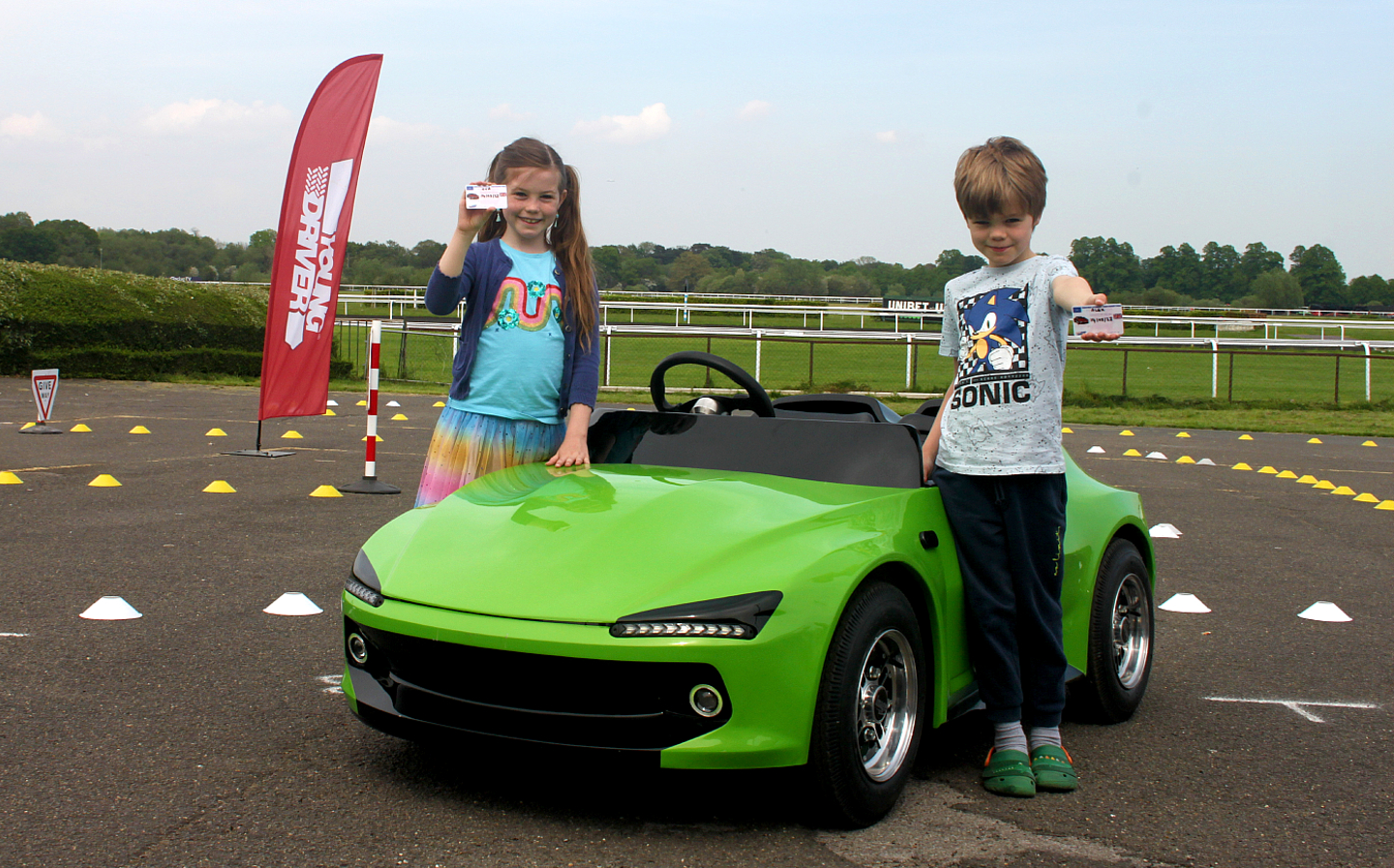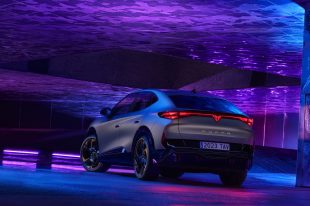Learning to drive aged seven: two children give their verdicts on lessons in a Firefly Sport
Getting children behind the wheel early could pay dividends at 17
What’s the best age for your first driving lesson? Is it 17 – the legal age at which we are allowed to drive a car on the road in the UK? What about 25? That’s when the brain’s prefrontal cortex has fully developed, meaning we’re less likely to take stupid risks and react irrationally behind the wheel (crash statistics and insurance premiums reflect this developmental phenomenon).
But what if we get our first lesson much earlier? The people behind Young Driver offer tuition in proper cars from the age of 10 (in car parks rather than on the road, of course) and have found that children of that age are much more likely to absorb instruction and less likely to become distracted than those who have their first lesson aged 17. In fact, two thirds of driving instructors surveyed by Young Driver (69 per cent) admitted they felt youngsters learn better before they turn 17.
Young Driver also claims early tuition helps to reduce the number of lessons needed after 17, while the chances of a newly-qualified driver having an accident in the first six months after passing their test drops from one in five to one in 29 following pre-17 training with Young Driver.
Would it be better to start the coaching at an even earlier age? That was the thinking behind the Firefly, a little electric car developed in 2016 by Young Driver Motor Cars — a sister company to Young Driver. With a top speed of 10mph it allowed children as young as five years old to get their first driving lesson, which is a massive advantage, according to qualified driving instructor Mark Beaumont.
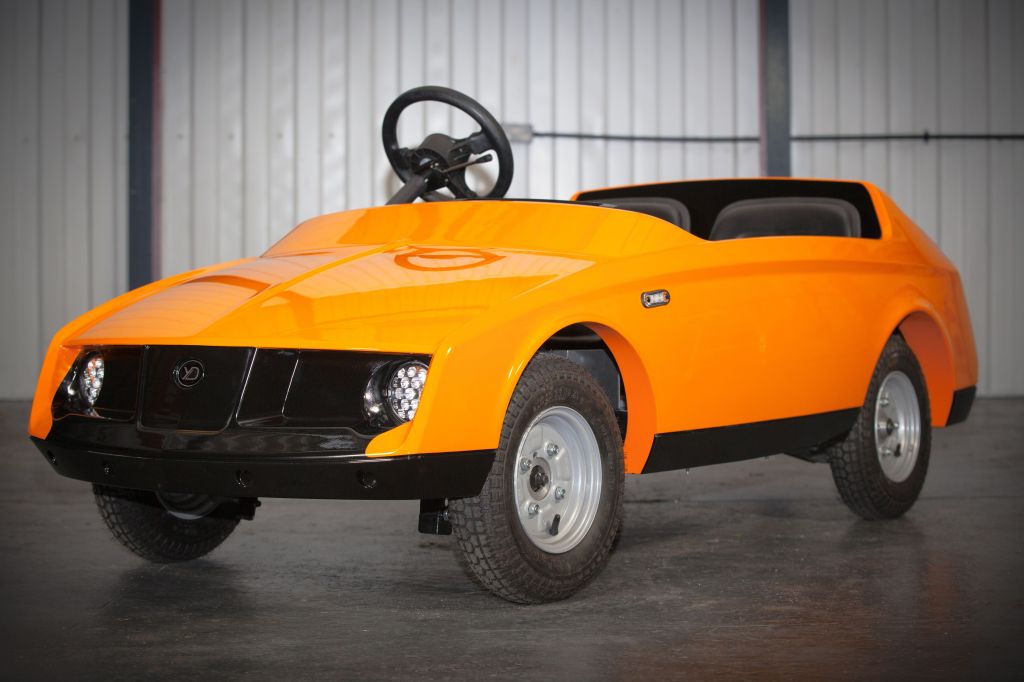
“Children’s brains are like sponges,” he explained. “If you take language as an example, we go abroad and almost get embarrassed because everyone can speak English, but they’re taught English at such a young age they can just absorb it. With driving, the earlier you’re taught the earlier it absorbs into what you do; it becomes part of your DNA. You can just do it without thinking.”
Although the British-designed and built Firefly came with independent suspension, an adjustable driver’s seat, hydraulic disc brakes and indicators, there was room for improvement. I purchased a lesson for my daughter’s eighth birthday at the start of 2022 and the cars seemed fairly ponderous, especially on an uphill slope, and with fairly crude rubber bump stop suspension the ride was firm. The steering was a little heavy, too.
That has all changed with its replacement: the Firefly Sport. This much sportier-looking machine is more sophisticated in every way.




Its twin 24v electric motors take the top speed up to a heady 25mph, though Young Driver students will learn with the speed electronically limited to suit their ability, and a remote kill switch means that wayward drivers can be brought to a halt by the instructor.
Dr Ian Pogson, previously an engineering quality manager for MG and SAIC, developed the Firelfy Sport’s powertrain while the chassis was overseen by Steve Rawson, a former Aston Martin engineer. As a result, the ride and handling characteristics have been completely revolutionised thanks to a new aluminium chassis and all-round independent suspension with coilover springs.
Despite the use of lightweight aluminium the new car is actually slightly heavier because it’s 20 per cent longer and wider than before, but the more advanced engineering means the steering wheel is easier to turn than on the old car; so much so that four-year-olds can drive it.
The Firefly Sport is also much more of a looker than its predecessor. The sports car-like body was developed at Coventry University’s world class car design school and, according to one insider, was unashamedly inspired by Teslas, which have the “cool factor” among children, apparently. However, the Firefly Sport is clearly its own thing, with a gaping front grille and supercar-like lines along the sills.




So happy is Young Driver Motor Cars with the design and engineering, they’ve even opened it up to buyers in a variety of colours, for use on private land: a snip at £11,500 including VAT.
It’s also made a huge difference to the Young Driver lessons, according to Beaumont: “It’s easier to control; it’s almost got the feel of a car that’s got power steering. Then there’s the spacial awareness — there is more realism with the proportions, which means children get a better feel for reversing, handling, how it turns and everything else. In comparison to the old Fireflies, it’s fantastic.”
The new car definitely got the thumbs up from my daughter Eva, now nine, and her younger brother Alex, 7, when we arrived at Kempton Park race course for their lessons, with both making a beeline for the luridly-painted machine before poring over it with unbridled excitement.
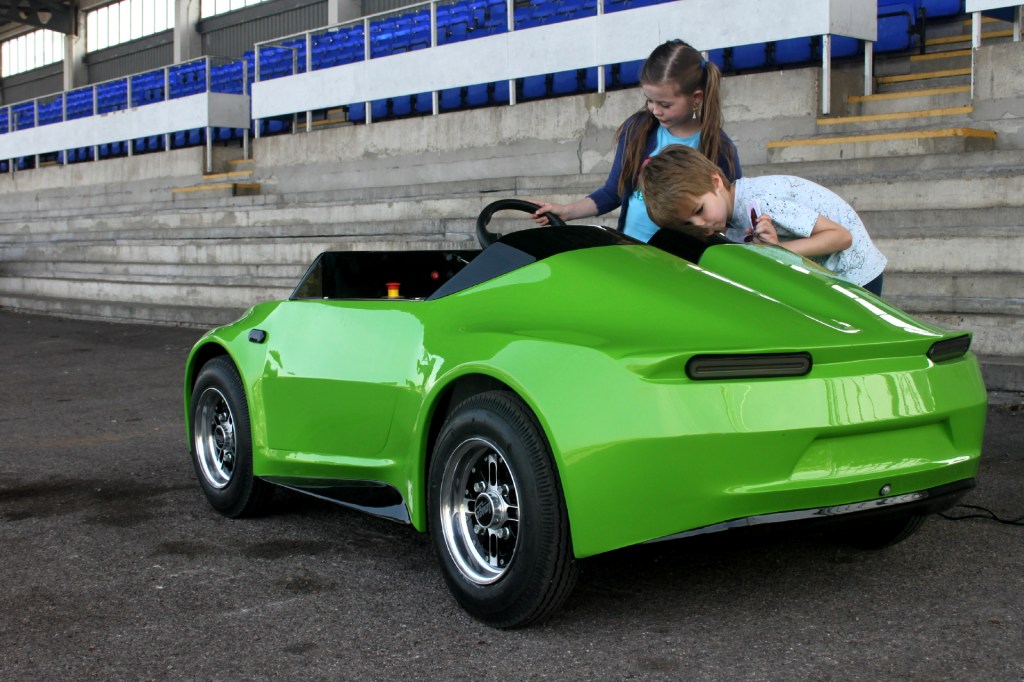
Eva was also impressed by the high tech digital instrumentation on the new car, which includes a speedometer, clock and battery gauge. The proper indicator stalk is linked to six indicator lights around the car (which children are asked to check before driving), plus there are LED headlights and rear lights.
There are also plans for future developments to include a dash-mounted screen with a reversing camera… not that visibility is an issue when it’s an open-topped vehicle, though if a roof is developed for rainy lessons, as planned, it could come in handy.
The lessons for the kids were as impressive as the new car. All Young Driver’s instructors are fully qualified to tutor students for their real driving test on the road, and that is crucial for instilling good driving behaviours in more junior drivers. Learning to look all around the car before making manoeuvres, keeping an eye out for road signs and using indicators are all key parts of the 15-minute course.



Beaumont, who has been a qualified driving instructor for 15 years and began teaching children at Young Driver 12 years ago before becoming a team manager four years later, was on duty for my two children and immediately established a rapport with them.
He spent a minute going over the controls before Eva was allowed to get behind the wheel and begin the practical lesson in earnest.




It included the procedures for approaching a stop sign, entering a roundabout and even a few complicated manoeuvres — my wife told me I looked prouder watching Eva nail a parallel park than when she took her first steps. I refused to confirm or deny the suggestion.
Alex was a little nervous at first but was eventually persuaded to climb aboard and before the end of his briefing was fully into the swing of things. He went through the same course as his older sister, performing just as well despite his more junior years (though Eva’s parallel park really was something special).



The final part of the session is finding out if they’ve passed, but before they did the children were asked a question from the Highway Code — Alex was asked to name the colours of a traffic light, which he answered without skipping a beat, to my delight.
Eva was given a trickier one: what comes after an amber traffic light? Red or green? Daddy was asked to help with that one, so parents might want to brush up on their theory before attending a course.
Despite the intervention, both children passed and were handed their licences. The smiles said it all.

“Working with children is absolutely amazing,” said Beaumont. “You look on their faces, and they see they can do something they didn’t think they were going to be able to do. Working with kids is just fantastic because you can help to mould them, so that they know what they’re doing with driving when they reach 17, and know what to do with the vehicle.”
Confidence is the most important thing children gain from the course, according to Beaumont. It doesn’t make them cocky, it simply helps remove the initial trepidation of a young driver so that when they do first venture out onto the road, they can concentrate on what really matters.
“A 17-year-old on the road is already a bit apprehensive about what can happen. At this age there is no fear, which means they can take anything in.
“When I’ve taught people on the road that I’ve also taught within Young Driver, they have more confidence and ability in that first lesson. They’re not looking at their feet, they’re looking at the road. They’re aware of their surroundings; what’s going on; looking at what every other vehicle is doing; planning; anticipating. They can do that because they already have the confidence. They know how the vehicle works.”
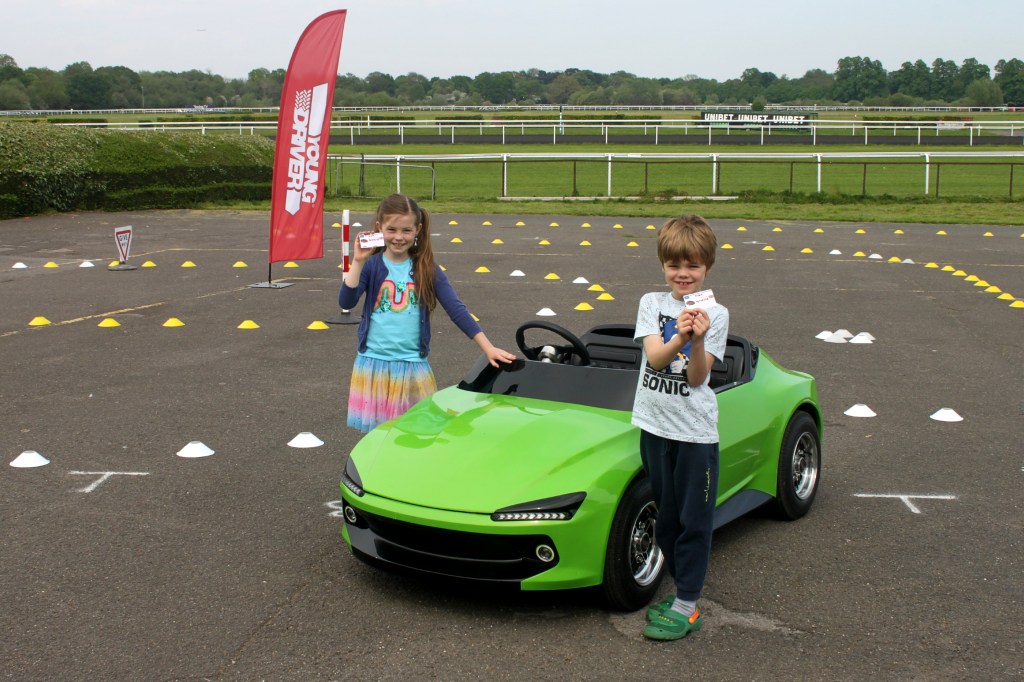
What was the verdict from the drivers, though?
“It was really good,” said Alex. “I thought it was going to be really hard at first but I managed it and now I’m really happy.”
“I really enjoyed it, too,” concluded Eva. “It was really nice there and they were really kind. I would recommend it to anyone because you can learn driving skills early while having so much fun.”
Wait until they turn ten and can have a go in the real thing.
The Young Driver Firefly Sport driving lessons are available for four to ten-year-old drivers at 45 training centres across the UK. Lessons cost £20 for a 15-minute test drive. Young Driver also offers lessons in full-sized cars for children aged 10-17, as well as experiences in classic cars, off-road buggies and even fire engines. Visit www.youngdriver.eu for more information.
Follow @wdron Tweet to @wdronRelated articles
- If you enjoyed this article about Young Driver driving lessons for four to ten year-olds you might be interested in this study that found one in five young drivers admit to video calling behind the wheel
- Here are the top 10 ways to calm your nerves before a driving test
- Could self-driving cars phase out the driving test by 2040? Some experts think so
Latest articles
- Omoda 5 prototype review: Bargain family SUV is solid first effort for new Chinese brand
- Dacia Duster 2024 review: Rugged, affordable SUV modernised with electrification and quite the glow up
- Audi A3 Sportback 2024 review: Softly, softly, catchy premium hatchback buyer
- New electric-only Mini Aceman fills gap between Mini Cooper hatch and Countryman SUV
- Tesla driver arrested on homicide charges after killing motorcyclist while using Autopilot
- Porsche Macan 2024 review: Sporty compact SUV goes electric, but is it still the class leader for handling?
- F1 2024 calendar and race reports: What time the next grand prix starts and what happened in the previous rounds
- Aston Martin DBX SUV gets the interior — and touchscreen — it always deserved
- Nissan unveils bold look for updated Qashqai, still made in UK


